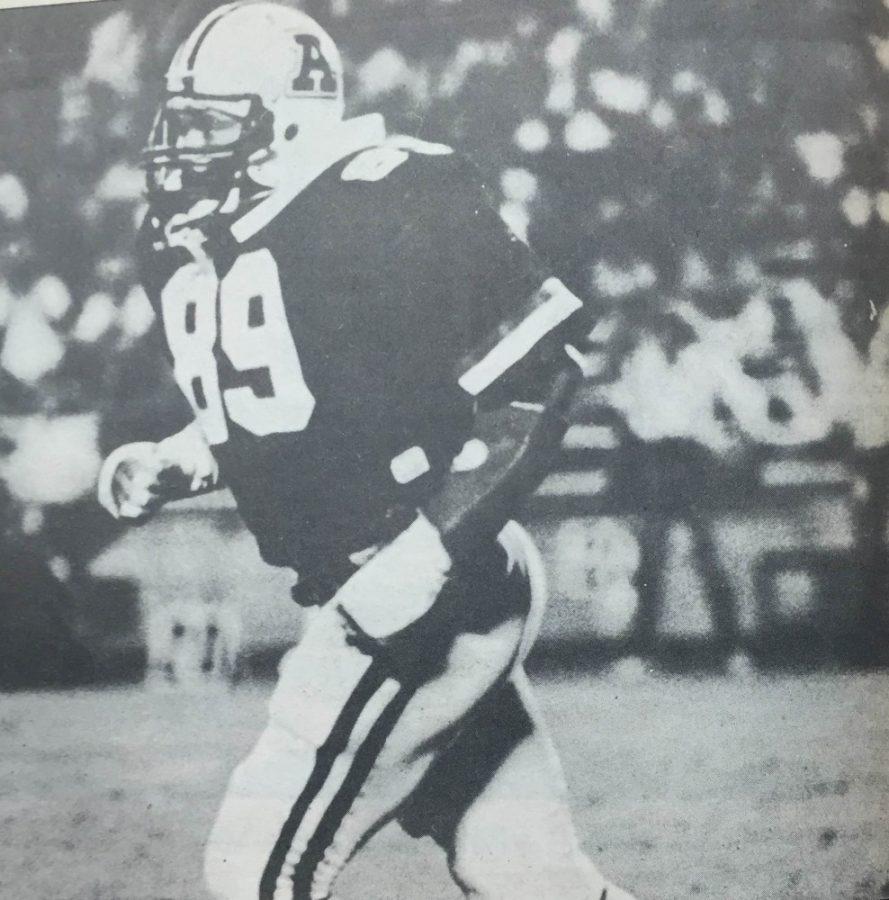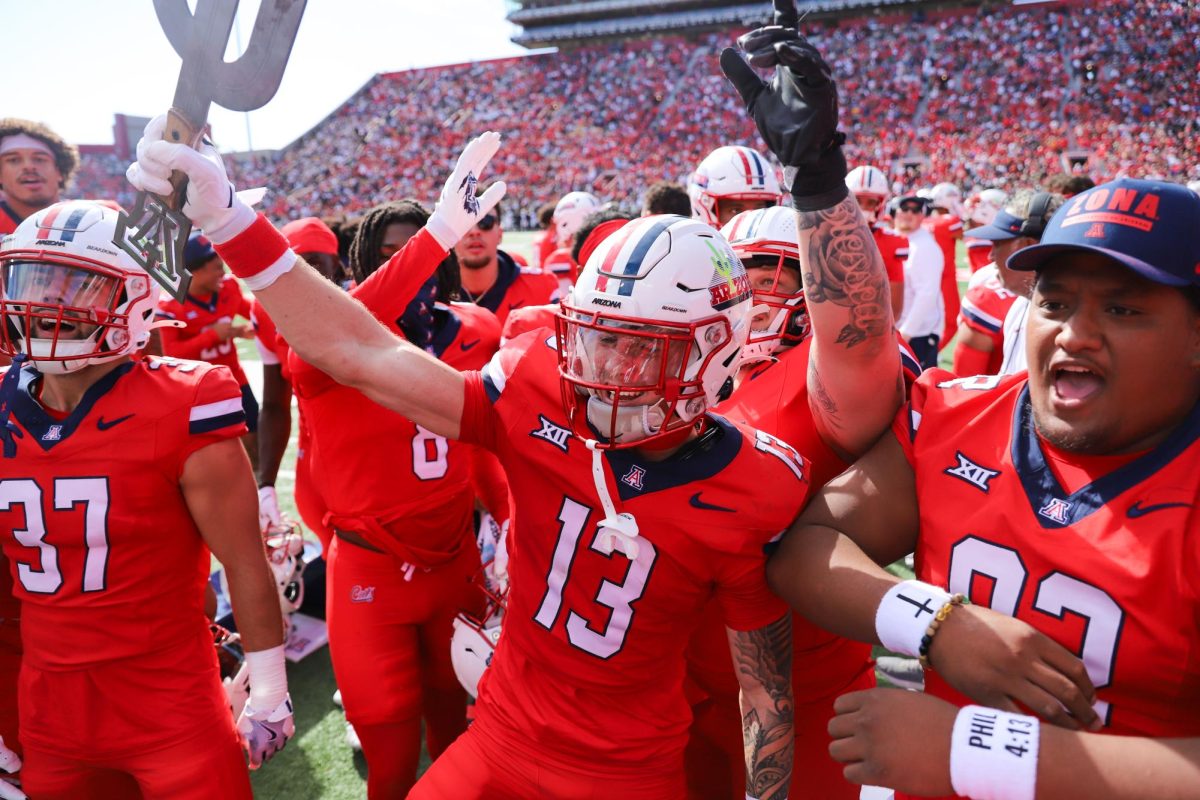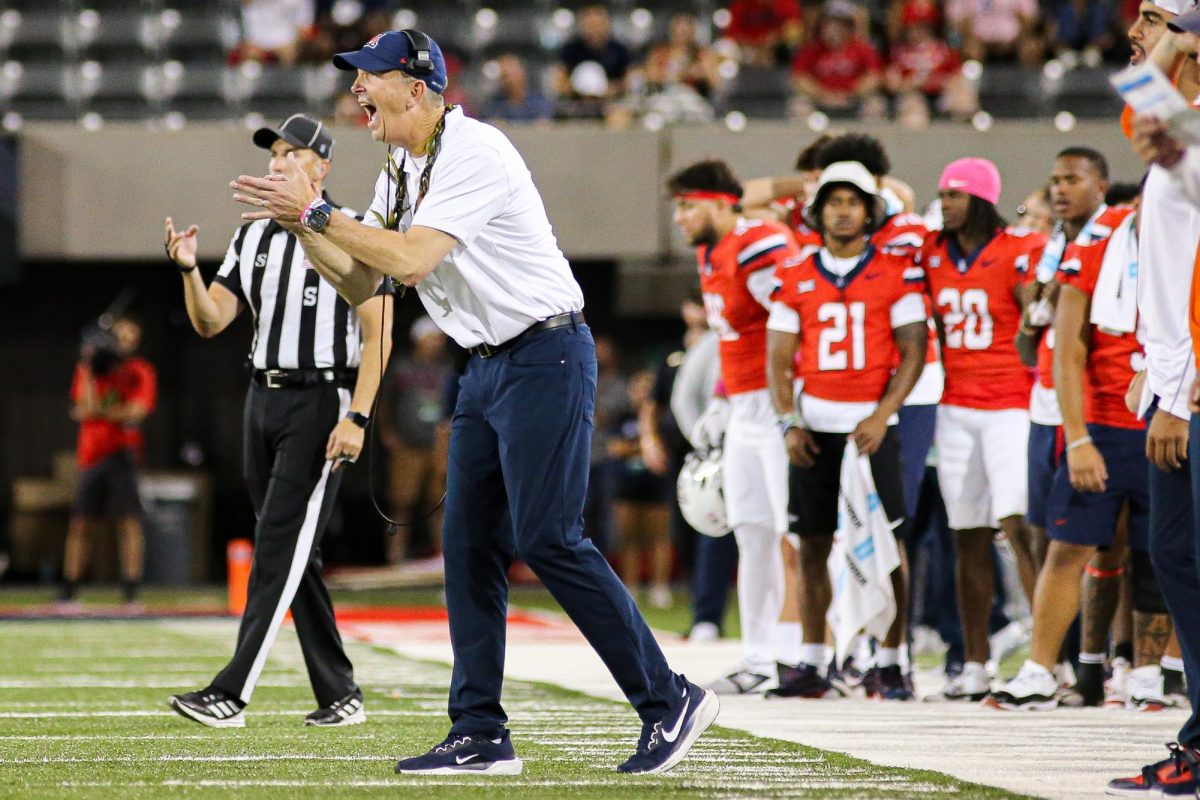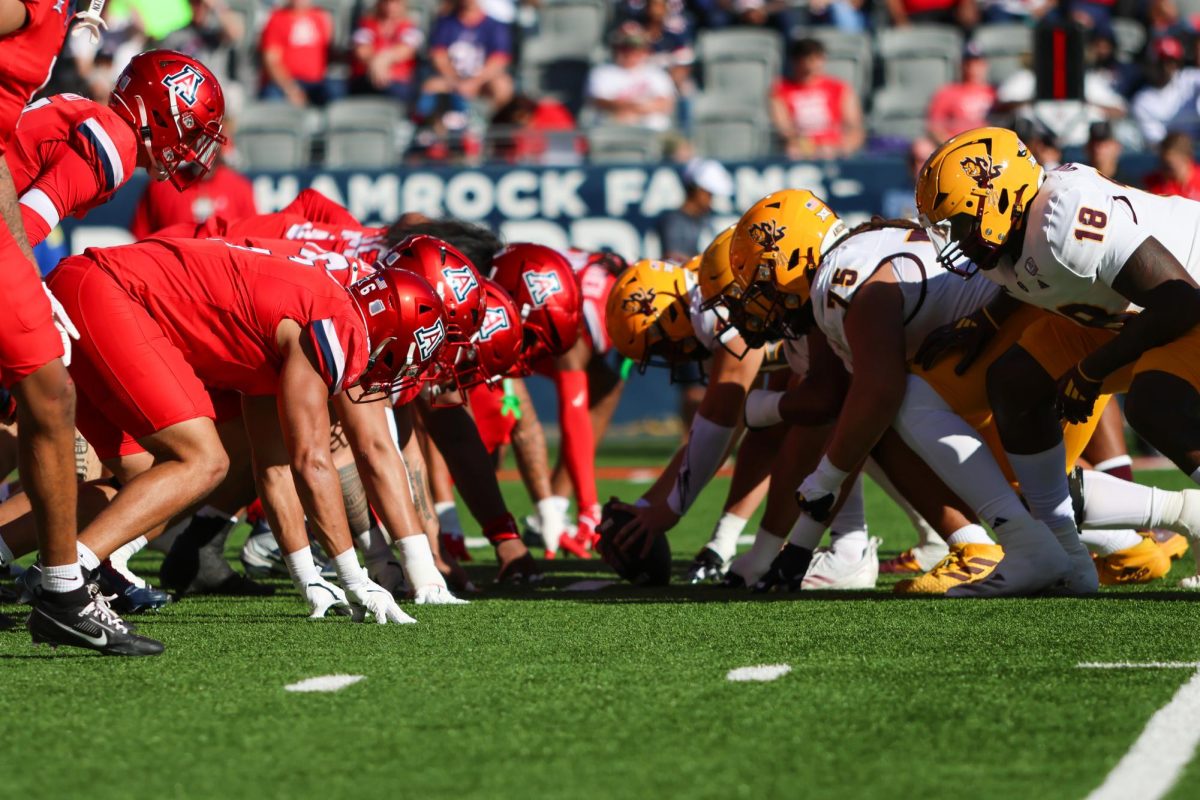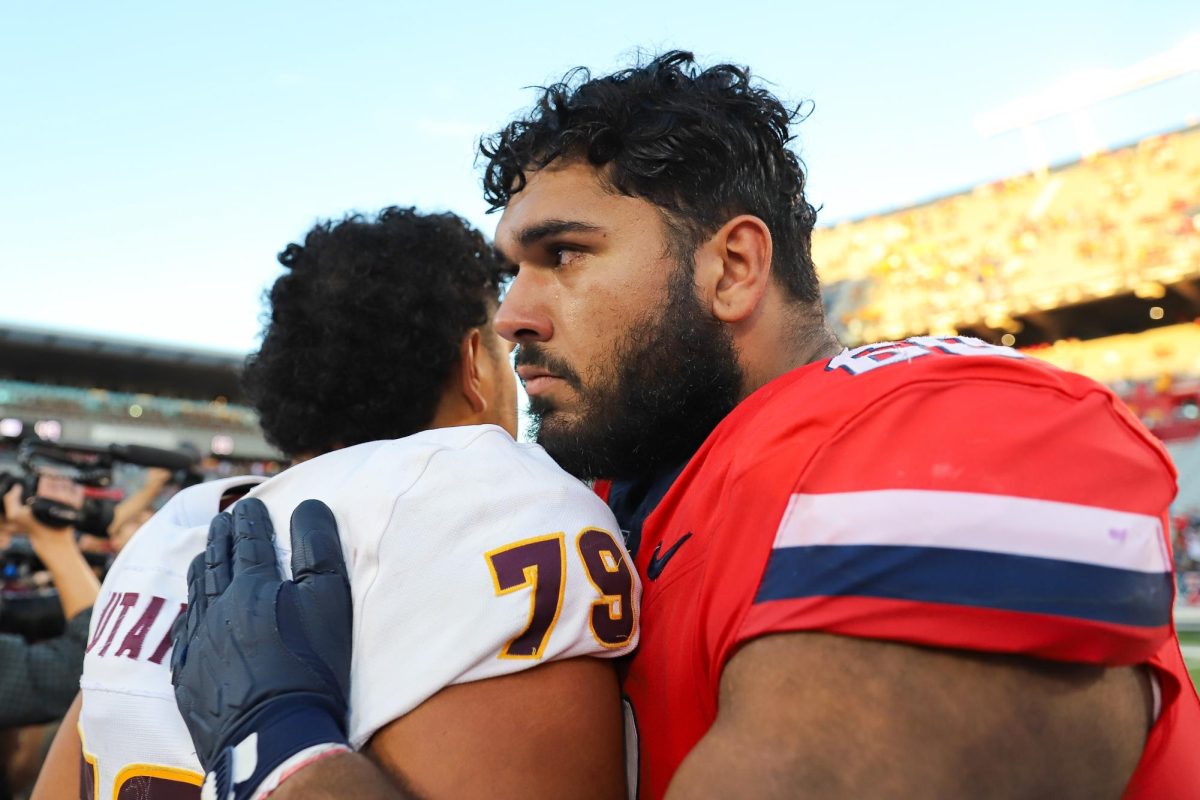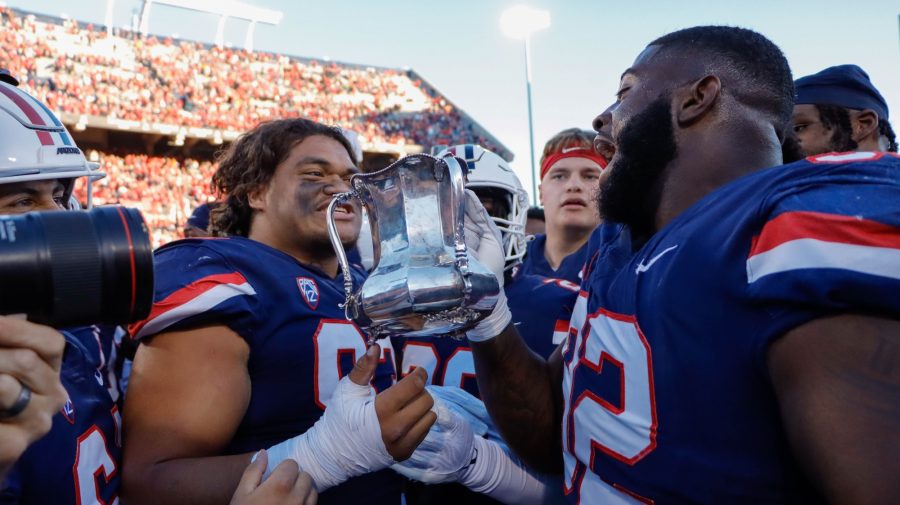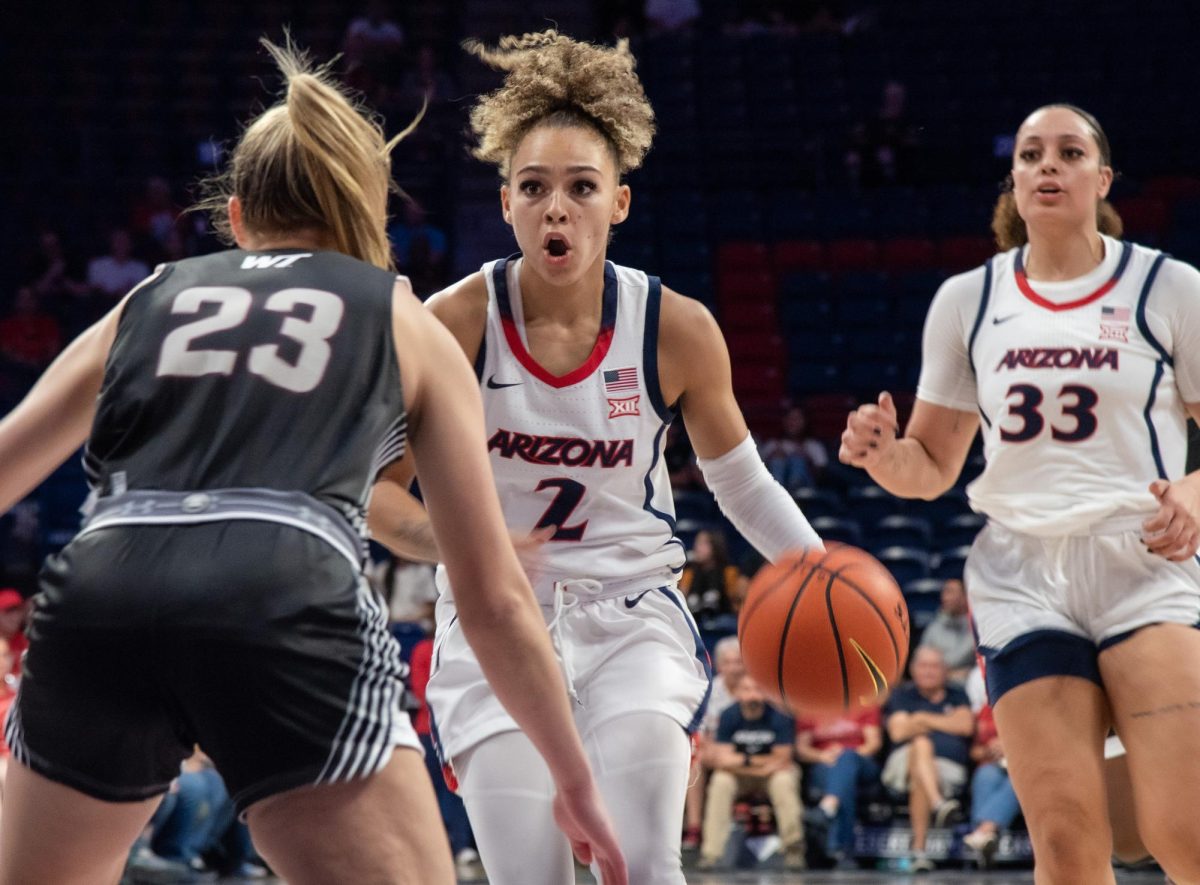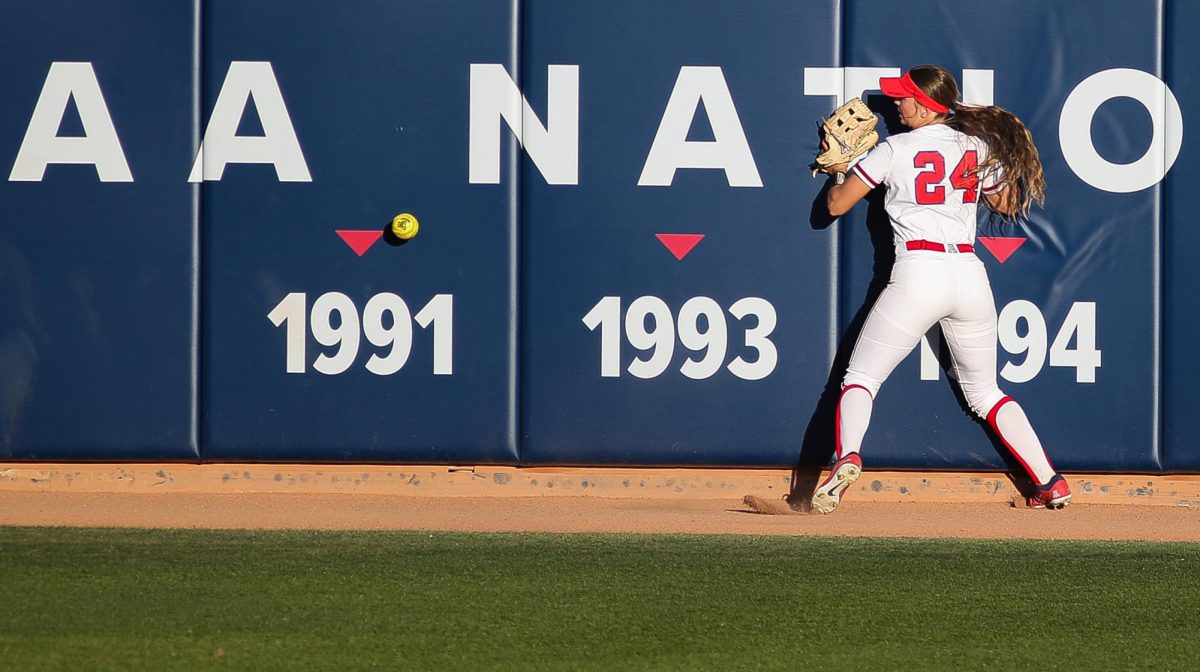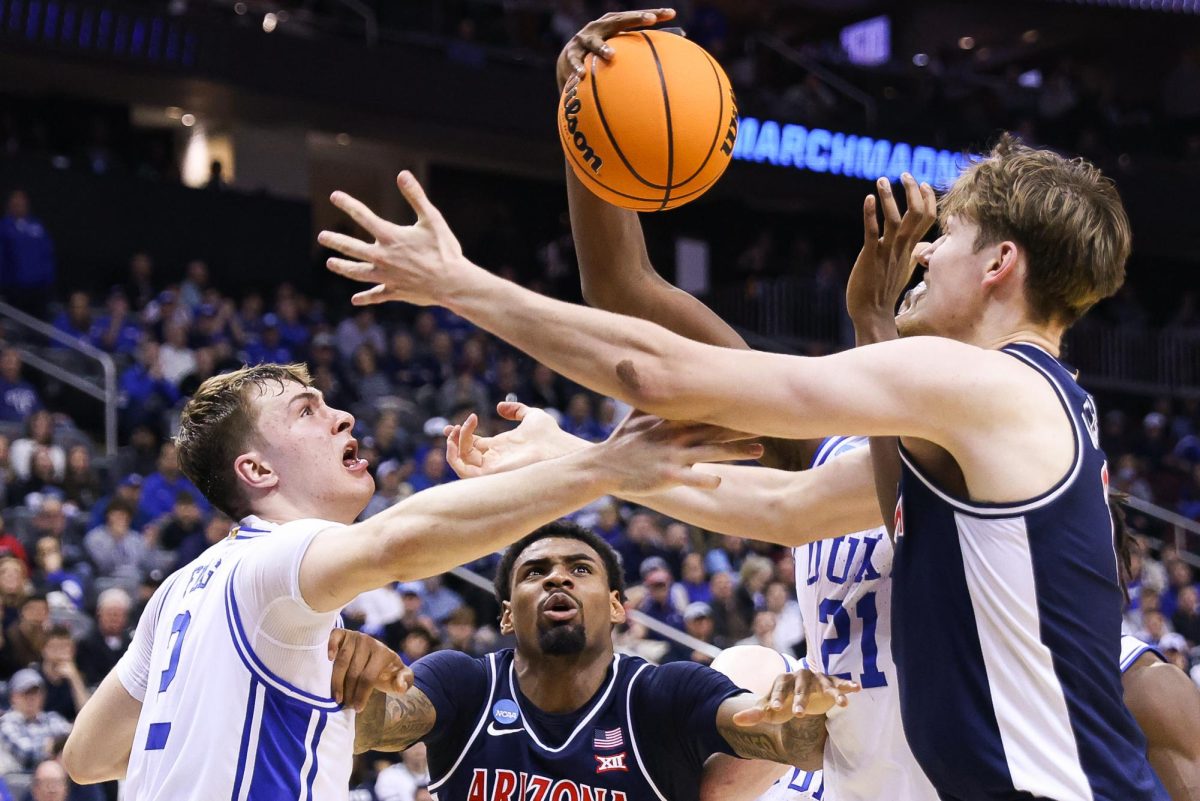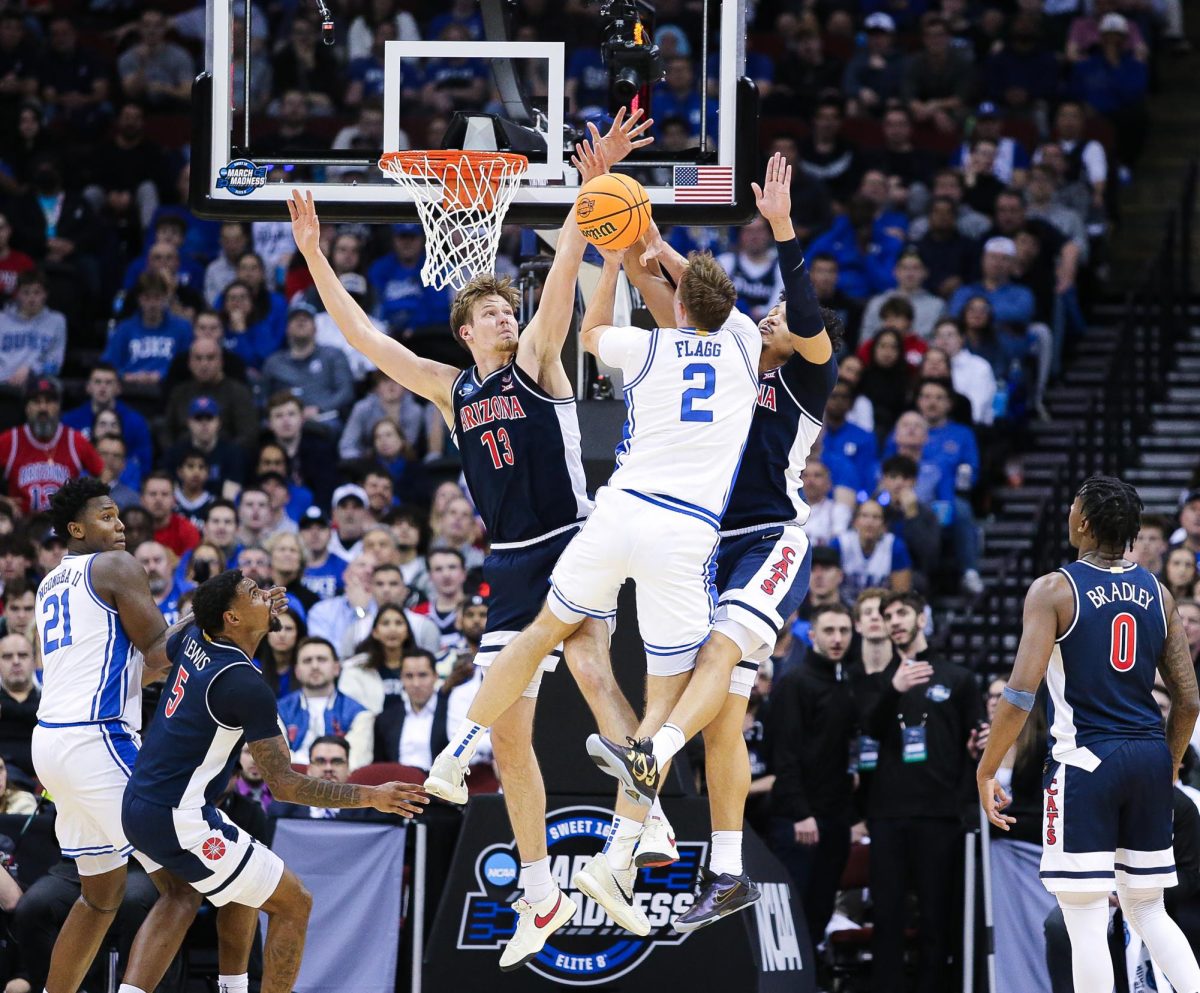Arizona football may not have the pedigree of Notre Dame, nor the championship count of Alabama, but the Wildcats have thrilled fans and inspired a region for 117 years and counting.
The history of Arizona football features a multitude of legendary players, coaches and moments. The Wildcats have and will continue to serve as a rallying point for the university and the city of Tucson.
The Varsity era
Arizona football started in 1899, and the Varsity—as the team was called at the time—played to a 1-1-1 record. Arizona slogged along during the early part of the 20th century as a program without an identity.
Then, following a tough loss to favored Occidental College in 1914, the Varsity was noted as having “the fight of wildcats.” An identity was formed, and the Arizona Wildcats slowly started their march out of obscurity.
By 1921, the UA had become one of the better programs in the west with Harold “Nosey” McClellan leading the nation in scoring. The year also marked the first time the Wildcats played in a postseason bowl game.
“… Tell them to bear down”
In 1925, starting quarterback John “Button” Salmon was mortally injured following a car accident on a return trip from Phoenix. In his final hours, the signal caller and student body president told head coach J.F. “Pop” McKale to relay a message to his comrades.
The message: “Tell the fellas … tell them to bear down.”
The final words inspired Salmon’s teammates, and wound up sticking as the UA’s motto.
Despite Arizona becoming a regional power, it didn’t have a permanent home. That changed in 1929 as Arizona Stadium opened with a capacity crowd in attendance.
The 1930’s were frustrating years for the Wildcats as McKale retired from the head coach position.
The “Blue Brigade”
Arizona was unable to build momentum until Gerald A. “Tex” Oliver assumed control of the program in 1933. Oliver founded the legendary “Blue Brigade”, and led them to a 32-11-4 record over five seasons. During Oliver’s tenure, the Wildcats never had a losing season, won two Border Conference championships and produced the program’s first All-American in quarterback, Ted Bland.
Following Oliver’s departure in 1937, the UA football program regressed under Orian Landreth, who was fired after a 3-6 season.
UA heads to war, team struggles
Miles Casteel arrived in Tucson from East Lansing, Michigan, where he had been a valued assistant at Michigan State. Casteel proved to be a great fit at the UA, winning the Border Conference title in 1941.
Arizona didn’t field a team in 1943-1944 due to World War II, but was a perfect 5-0 in 1945.
In 1949, the Wildcats were once again bowling as they played in the now defunct Salad Bowl, where they lost to the Drake Bulldogs.
Casteel left Tucson in 1948 and the program entered its next period of glory under former Hardin-Simmons coach, Warren Woodson.
Woodson’s teams were rarely on the national radar, but star halfback Art Luppino certainly was. The “Cactus Comet” ran roughshod through the Border Conference and the nation, finishing as the nation’s leading rusher in 1954 and 1955.
Luppino was more than a running sensation, he was a scoring machine setting an NCAA record for points in 1954. The Wildcats, however, weren’t able to immediately build upon Luppino’s stardom and once again were relegated to an insignificant program.
In 1961, that started to change as Jim LaRue’s Wildcats finished 17th in the Associated Press poll with an 8-1-1 record. The Wildcats had outgrown their home in the Border Conference, and joined the Western Athletic Conference in 1962.
Farewell Border Conference
The WAC proved to be a good home for the UA, as it competed against some of the best schools in the Southwest.
Darrell Mudra took the Wildcats to the Sun Bowl in 1968 after completing an 8-3 campaign. Unfortunately, Mudra left the program and accepted a job at Western Illinois, leaving the UA in turmoil.
In 1973, Jim Young arrived in Tucson a first time head coach, but he had worked alongside Bo Schembechler at Michigan.
Young immediately turned Arizona around, going 8-3 his first season. The Wildcats posted a pair of 9-2 records in 1974-1975, with both seasons ending with the team ranked in the polls.
By this time, WAC powers were frustrated at a lack of national exposure, with few conference teams being invited to major bowl games.
As a result, the WAC schools came together and formed the Fiesta Bowl, a bowl game that would feature the conference champion against a nationally ranked opponent.
Despite the Fiesta Bowl eventually becoming a New Year’s Day staple, the Wildcats along with rival Arizona State decided to join the Pacific 8 conference in 1978.
Joins the Pac-10
Arizona struggled in its first years in the newly-named Pacific-10, failing to make much of an impact in the standings. The lone bright spots were quarterback Tom Tunnicliffe and linebacker Ricky Hunley. Tunnicliffe left the UA as the program’s all-time leading passer, and Hunley was a two-time consensus All-American.
Despite their individual accomplishments, the Wildcats were mediocre.
Larry Smith, formerly of Tulane, was hired as head coach in 1980, and started to pull the Wildcats out of the conference cellar.
Arizona upset top-ranked USC in 1981, and started to consistently beat ASU. Smith’s best years came in 1985 and 1986, as the Wildcats went a combined 17-6-1. The 1986 Aloha Bowl victory over North Carolina was Arizona’s first postseason victory, and capped a 9-3 record.
Following the triumph in Hawaii, Smith resigned and took a head coaching job with the USC Trojans.
Dick Tomey assumed command following Smith’s exit in 1987, and not only did the Wildcats continue their upward trajectory, they finally emerged as a national power.
“Desert Swarm” Tomey led Arizona to their first Pac-10 championship in 1993, finishing 10-2 and ranked in the top 10.
The magical season ended in high style, as Arizona demolished the Miami Hurricanes in the Fiesta Bowl.
The Wildcats mauled opponents behind a defense that became known as the “Desert Swarm”. Defensive tackle Rob Waldropled the fierce unit, and remains the most decorated Wildcat in program history.
Waldrop won the Outland Trophy in 1993, establishing him as the finest interior lineman in the country, offense or defense. The dominant mauler also was a two-time consensus All-American, and the 1993 Nagurski Trophy winner.
“Desert Swarm” was more than Waldrop — future NFL stars Chris McAlister and Tedy Bruschi also took their first steps toward stardom as members of the tenacious defense. In 1998, Tomey’s Wildcats were one of the best teams in the country. Arizona dominated the Pac-10, going 12-1 with a loss to UCLA being the only blemish.The Wildcats were slated to play in the program’s first Rose Bowl, but UCLA’s late-season loss to Miami kept the UA from making history. However, Arizona rebounded and soundly defeated the defending national champion Nebraska Cornhuskers in the Culligan Holiday Bowl.
The Tomey era ended in 2000, when the coach resigned under pressure. In his 13 years in Tucson, the Wildcats won 95 games, had 20 All-Americans, 43 All-Pac-10 selections and five first round NFL draft picks. For that reason, Tomey is considered to be the best football coach in Arizona history.
“Stooped” down a level
Replacing a legend is difficult, and the Wildcats struggled to replace Tomey.Both John Mackovic, 2001-2003, and Mike Stoops, 2003-2011, were unable to replicate Tomey’s success, with the high point being two 8-5 seasons under Stoops.
RichRod comes to town
Former Michigan and West Virginia head coach Rich Rodriguez took over after Stoops was dismissed midway through the 2011 campaign. Following two 8-5 bowl seasons in 2012 and 2013, Rodriguez’s Wildcats made their way to the 2014 Pac-12 Championship game, ultimately falling to the Oregon ducks, setting up a date with the Boise State Broncos in that year’s Vizio Fiesta Bowl.In four seasons under Rodriguez, the Wildcats have reached the postseason each and every year, and have won three bowl games in four years, while compiling a 33-20 overall record.
It’s one of the winningest stretches in Arizona football history, and the program will look to continue its recent success in the upcoming season.
Follow Nathan Skinner on Twitter



